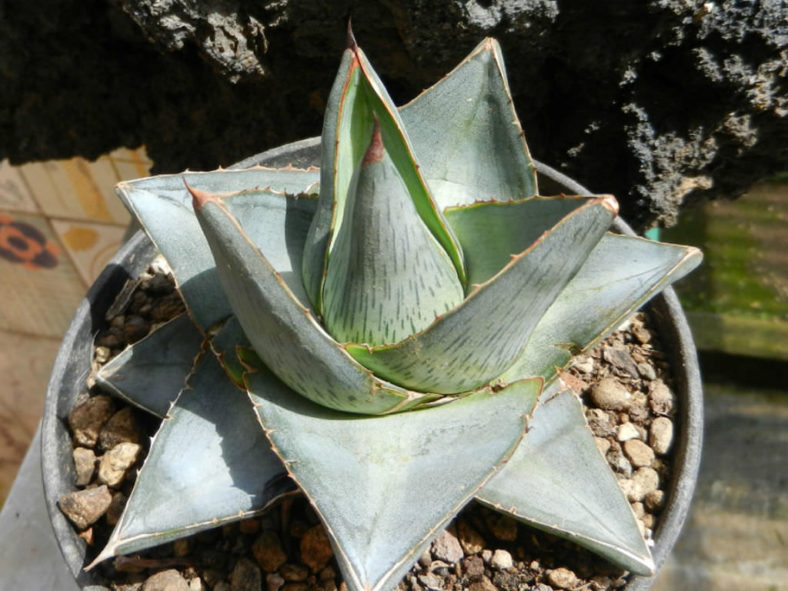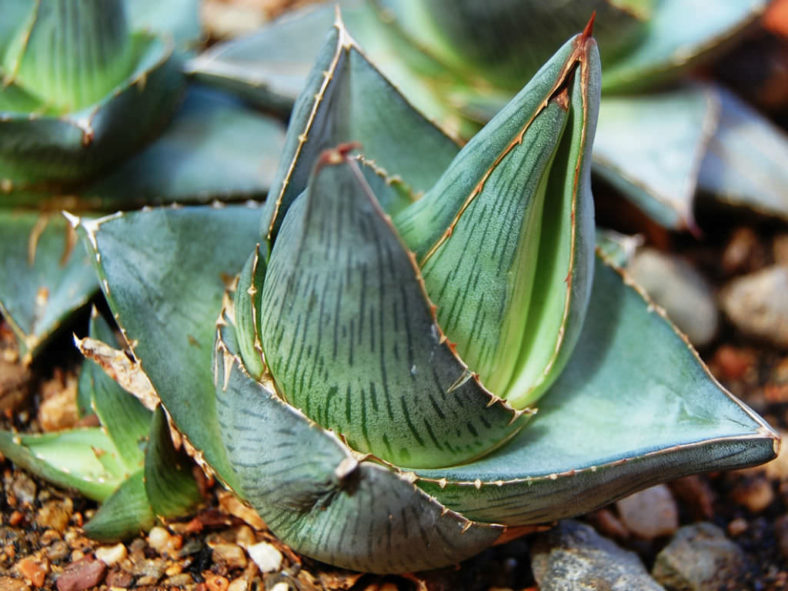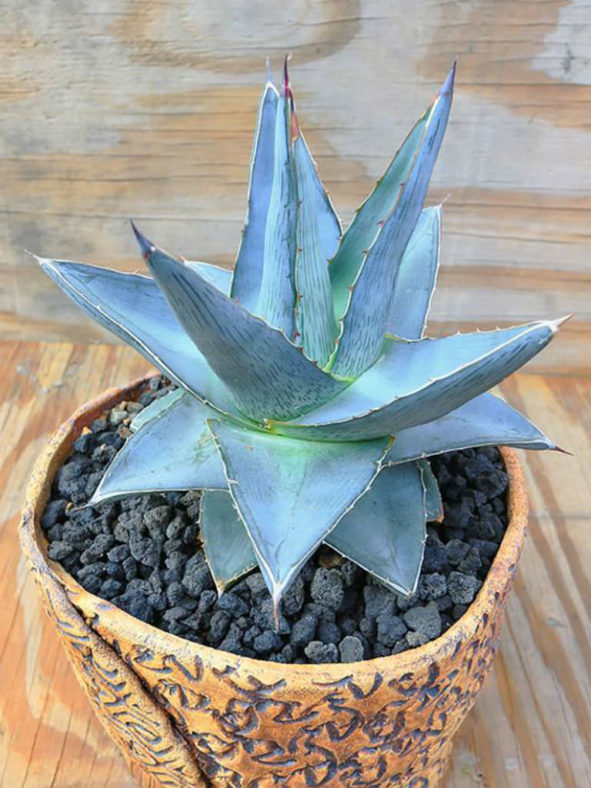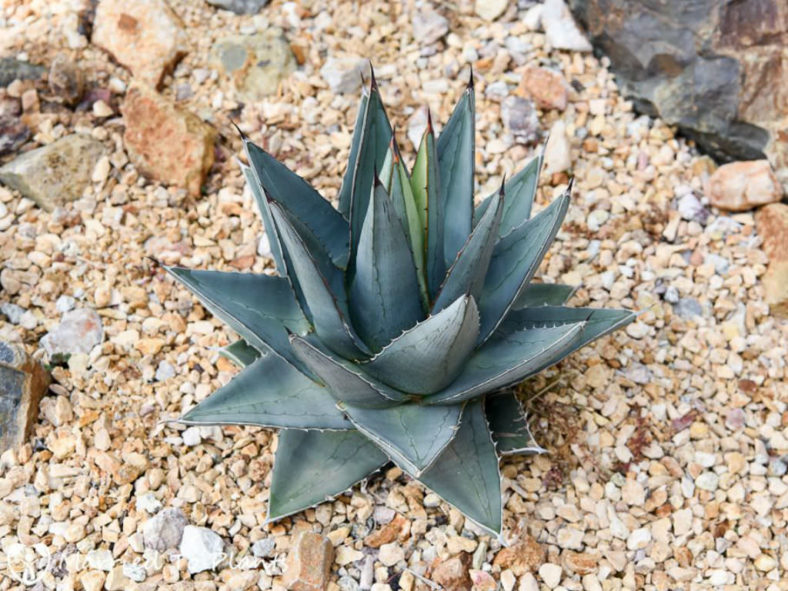Scientific Name
Agave pumila De Smet ex Baker
Common Name(s)
Dwarf Century Plant, Miniature Agave
Synonym(s)
Agave ×pumila
Scientific Classification
Family: Asparagaceae
Subfamily: Agavoideae
Genus: Agave
Origin
The origin of Agave pumila is quite a mystery. It was first described by John Baker in 1888 based on a specimen growing at the Royal Horticultural Gardens at Kew. This specimen was obtained in 1879 from the Dutch plant trader De Smet, who probably received it from Mexico. According to Howard Scott Gentry and Charlie Glass, it may be a naturally occurring hybrid resulting from a cross between Agave lechuguilla and Agave victoriae-reginae.
Description
Agave pumila, also known as Agave ×pumila, is a slow-growing succulent with dimorphic stages. It grows for many years, usually 8 to 12, in juvenile form as a small suckering rosette of short, smooth, gray-green leaves with small, weak marginal and terminal spines. The leaves are deeply concave above and check-striped below, measuring 1.6 inches (4 cm) long and wide. In this stage, the rosette can reach up to 3.2 inches (8 cm) in diameter. As the plant matures, it forms an open, solitary, few-leafed rosette of paler, elongated leaves with white leathery margins and a stout, short, dark brown terminal spine. In this stage, the rosette can reach up to 28 inches (70 cm) in diameter. They are much smaller when grown as a container plant. The leaves can grow up to 18 inches (38 cm) long and 1.8 inches (4.5 cm) wide.
This species is not known to have ever flowered.

Hardiness
USDA hardiness zones 9b to 11b: from 25 °F (−3.9 °C) to 50 °F (+10 °C).
How to Grow and Care
Agaves are not difficult plants to grow. They are slow-growing and dramatic and will even thrive on a bit of neglect. If you are the type of person who likes to fuss with houseplants and water a lot, Agave is probably not the plant for you. If, however, you are the type of person who likes to set it and forget it, and you have a sunny window, Agave might be the way to go. Be aware that some large varieties will eventually outgrow your room (unless you have a large greenhouse), and Agave can be aggressive. They have irritating sap and sometimes very sharp thorns that can cause injuries to small children and even pets.
In general, Agaves do not need to be repotted every year. Most species commonly found in cultivation grow slowly and take long to outgrow their pot. It is also best to handle your plants as little as possible since they do not like to be disturbed. When repot, refresh the spent soil with a new potting mix and make sure the plant is firmly anchored in its pot. However, be careful not to pot the Agave too deep, as that will encourage stem rot during the growing season.
See more at How to Grow and Care for Agave.
Links
- Back to genus Agave
- Succupedia: Browse succulents by Scientific Name, Common Name, Genus, Family, USDA Hardiness Zone, Origin, or cacti by Genus
Photo Gallery
Click on a photo to see a larger version.


